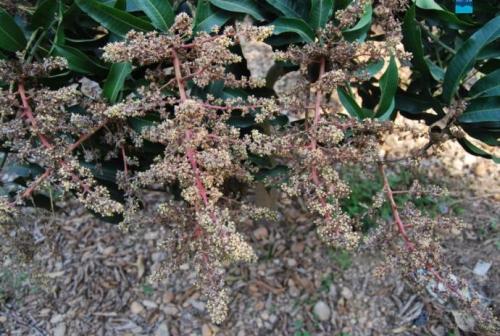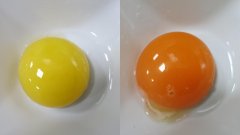Mango disease control: mango common disease powdery mildew disease and control methods
What is the disease of mango powdery mildew? What is the cause of ecology? How to prevent and control, the method of prevention and control?

Symptoms: the disease can occur on lemon inflorescences, tender leaves, young fruits and tender stems, white and powdery bacteria can be seen in the affected parts, and there is a brown ring around the small disease spots in the early stage of the tender stems and leaves, but in the later stage, the disease spots heal into large white spots, and then gradually turn into bluish purple, and the seriously affected young stems and leaves are often deformed. When the disease spot continues to develop and surrounds the pedicel, the small fruit on it will begin to turn yellow and fall, so the seriously hairy lemon fruit tree will not have any fruit. In the later stage of the disease, the bacteria in the lesion turned gray and black. When the once-diseased fruit grows up, purple net will appear on the surface, which will affect the commercial value of the fruit.
Occurrence ecology: the host of lemon fruit powdery mildew is limited to lemon fruit and will not infect other crops. all cultivated varieties are susceptible to the disease, and the disease is more serious in the southern part of the province. The source of the initial infection comes from the pathogen that lives in the diseased tissue on the ground. When the lemon fruit blossoms every spring, the pathogen will form ascomycetes, which will emit ascospores when ripe, infecting the spikes and young branches and leaves of the lemon fruit. Ascospores germinate to form hyphae, grow on the surface of host tissue, invade stomata or lenticels, form haustorium and absorb host nutrients. The hyphae form conidia on the surface of the host, which is the main transmission organ. The spores spread by air and landed on other healthy flowers, becoming the second source of infection and spreading rapidly. After the infected tissue gangrene died, it fell to the ground, and the bacteria survived. In the following spring, a sexual generation was formed, producing ascomycetes and ascospores, and then infecting the blooming lemon fruit.
Control method: lemon fruit powdery mildew is one of the lemon fruit diseases which is easy to be prevented and managed. as long as it is properly controlled, the disease can be controlled. When preventing and controlling powdery mildew, keep in mind the timing. Once powdery mildew occurs in the early stage of flowering, it should be applied immediately every ten days, about two to four times. Until the young fruit is formed, the following chemicals will be used.
- Prev

Taiwan rice: Taichung Indica 17 came out, and the Animal Test Institute developed feed rice to raise delicious rice and chickens.
In order to expand the domestic rice consumption, the livestock production laboratory (hereinafter referred to as the animal husbandry laboratory) specially used Taichung Indica 17 as feed rice to replace corn. It was found that the native chicken eating fodder rice had a significant improvement in meat quality and flavor, which was suitable for livestock production.
- Next

Plain monitor lizard breeding course: how to raise plain monitor lizard? Basic feeding of plain monitor lizard
Do you like plain monitor lizards? Do you know how to breed it? The following is to introduce you to the breeding methods of plain monitor lizards. Environment: the plain monitor lizard comes from the African prairie. They like to climb and swim less. But they still need a big swimming pool. I loved it when I was young.
Related
- A one-day flower show brings 130 million yuan in orders! Nanhai, this Phalaenopsis exhibition is amazing
- What do the flower language and meaning of Lutheran tree mean? Precautions for planting Lutheran tree
- Encounter Chaoshan Kongfu tea, not without this cup of Phoenix single clump
- The durian market in Vietnam and Thailand is flooded. The price of imported durian has plummeted by 30-40% in a month.
- Shanghai solved the problem of local vegetable supply by planting 80,000 mu of green leafy vegetables.
- Wageningen University has become the best agricultural university in the world for the seventh time in a row.
- The strongest export season of South African grapes is full of challenges, with exports to Russia falling sharply by 21%.
- Sri Lanka is on the verge of bankruptcy, "Tea for debt" Organic Agriculture Revolution aggravates the Food crisis?
- Turning waste into earthworm manure and worm manure into organic fertilizer-A new choice for auxiliary farming
- Organic rice growers shoulder the responsibility of nurturing agricultural talents! Yinchuan Sustainable Farm with Organic Life Camp

